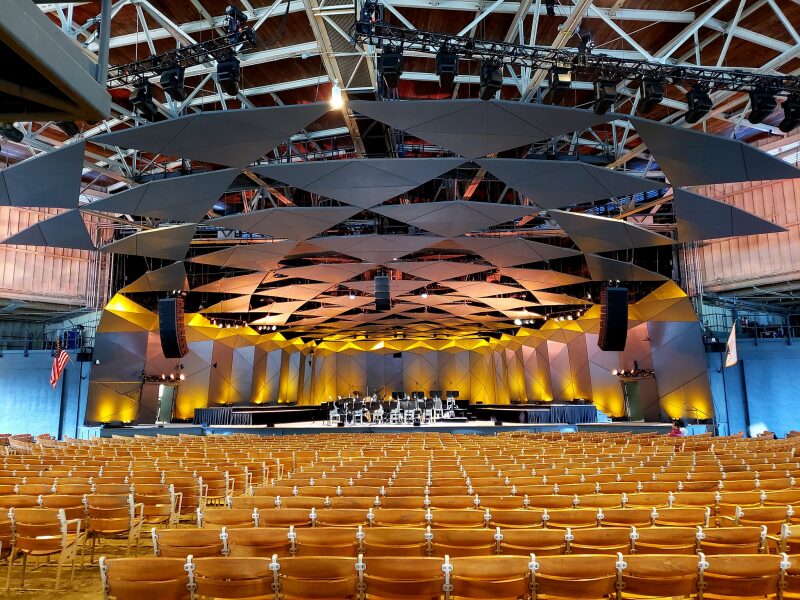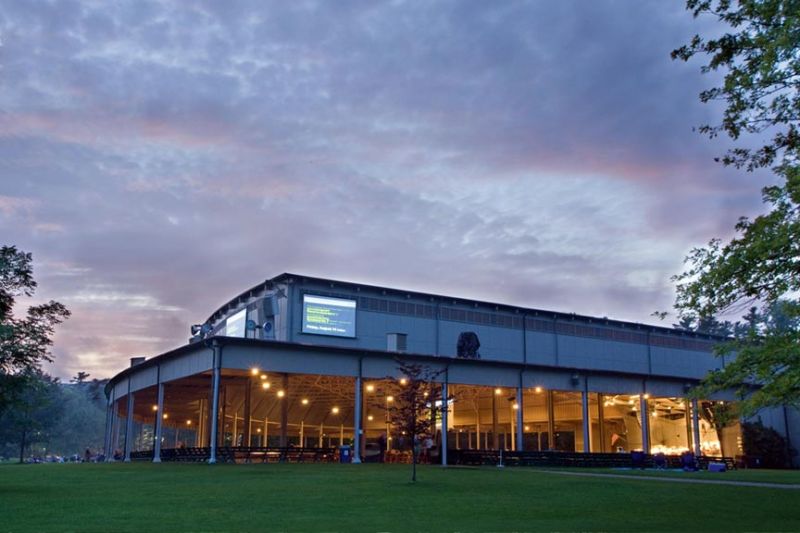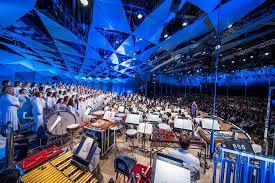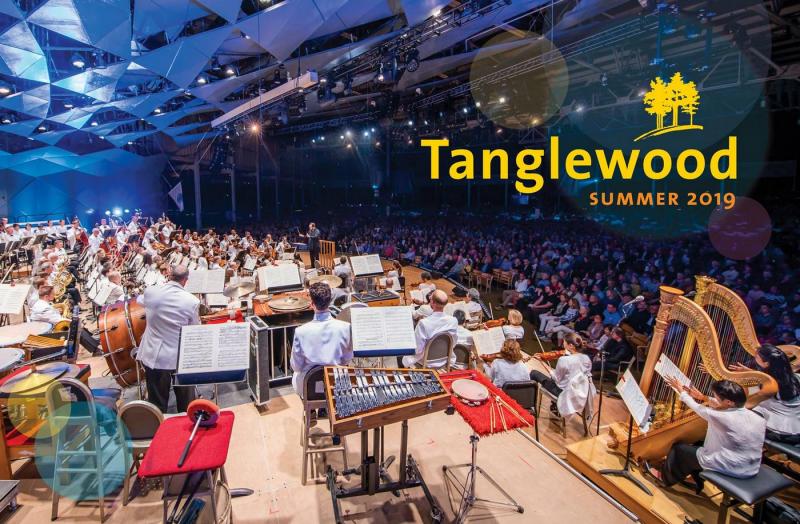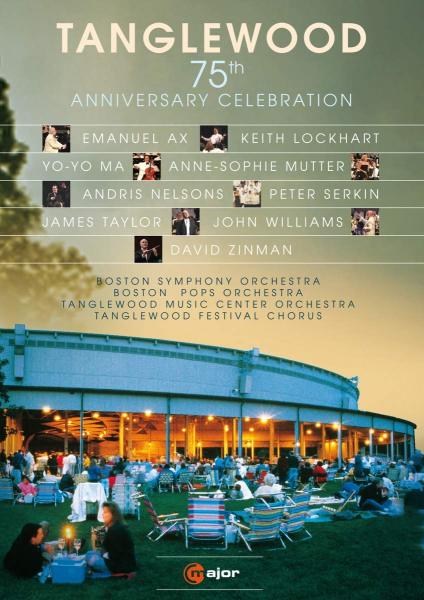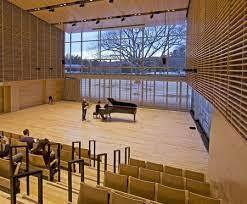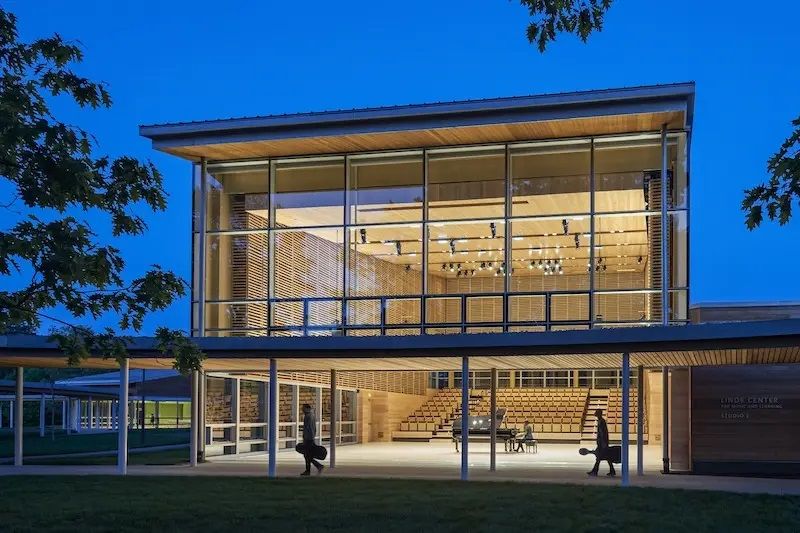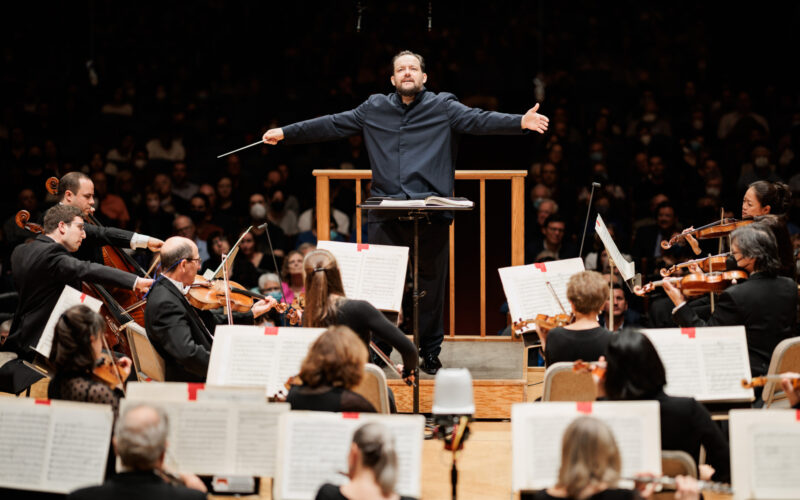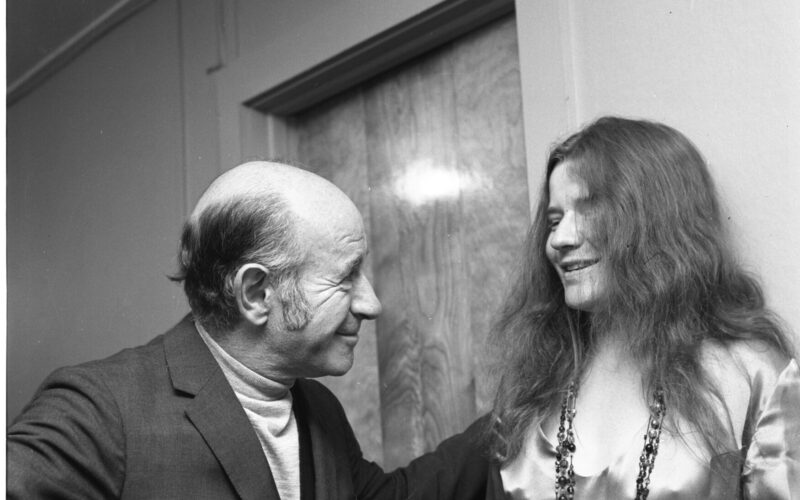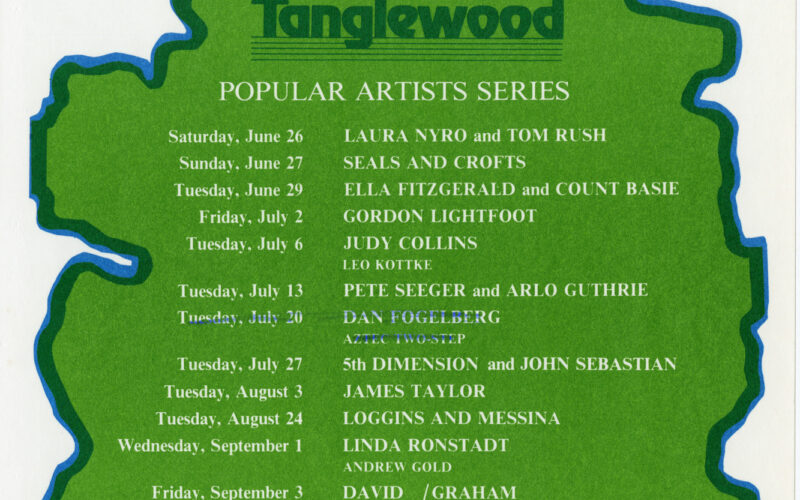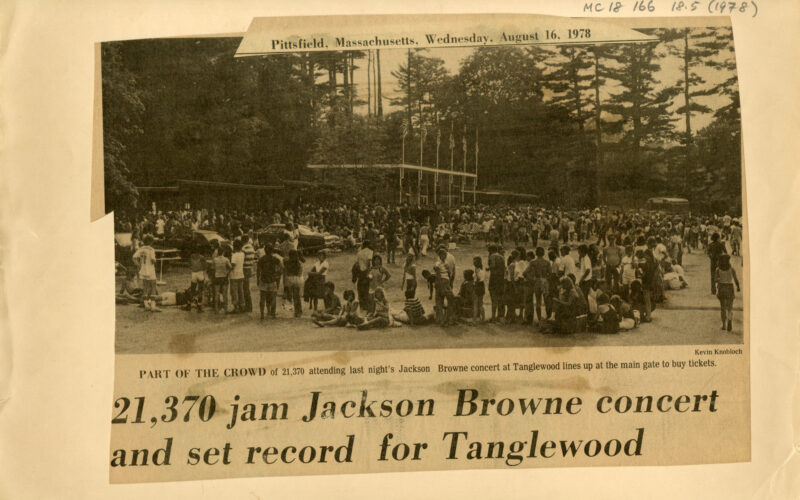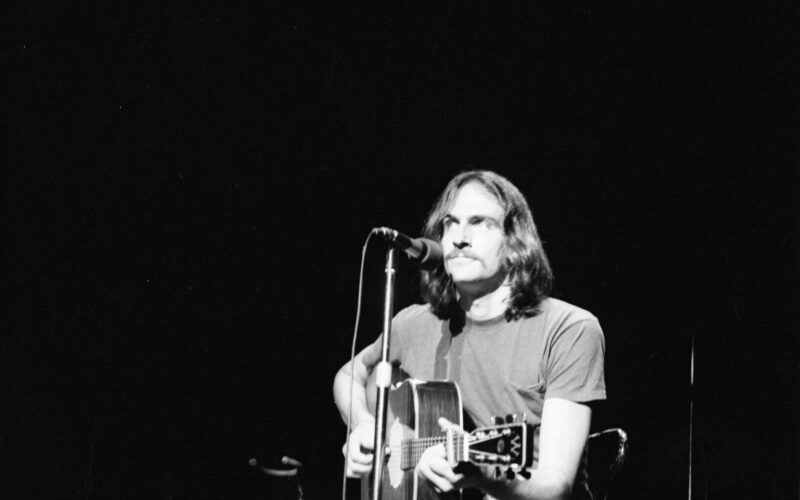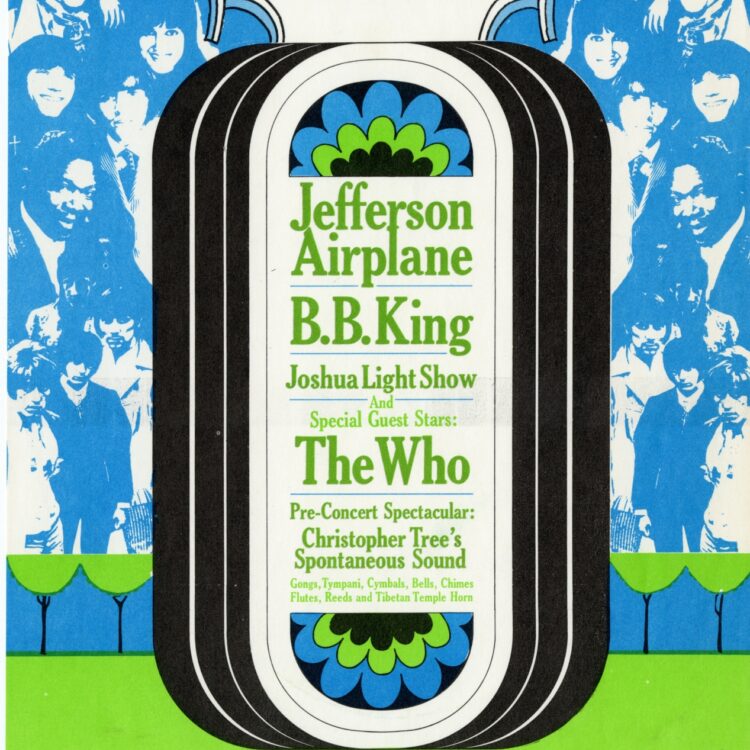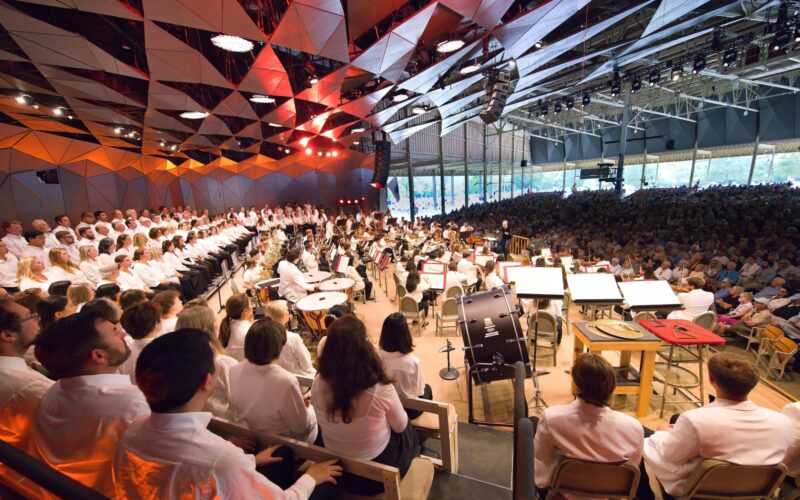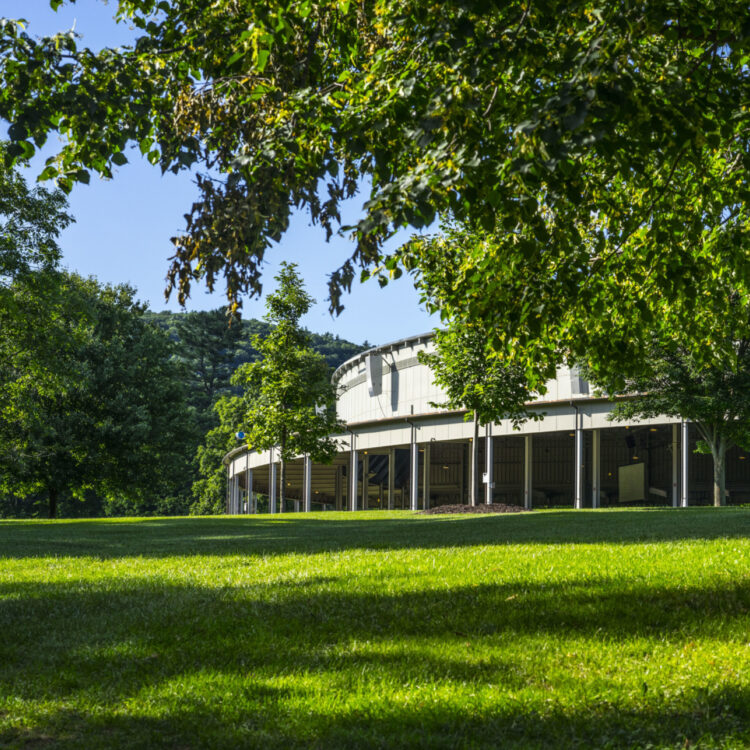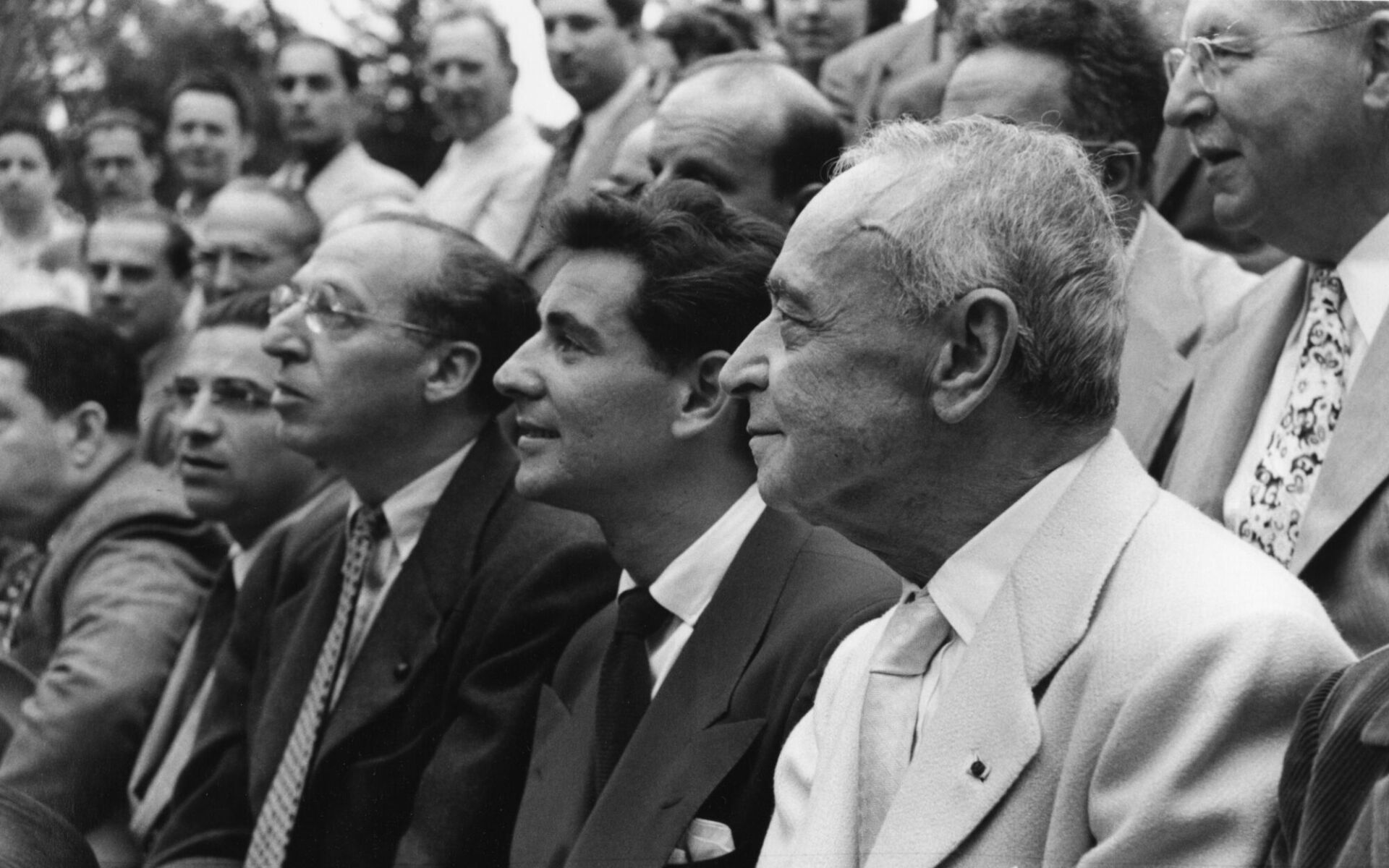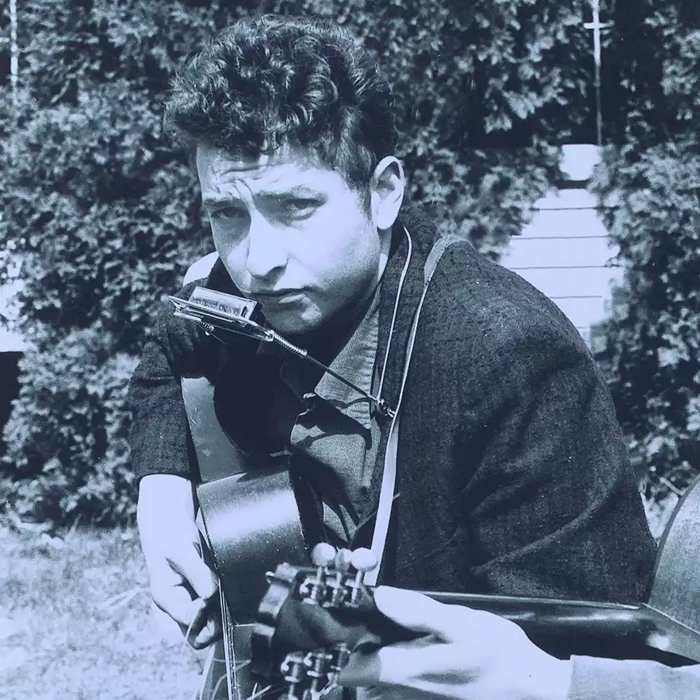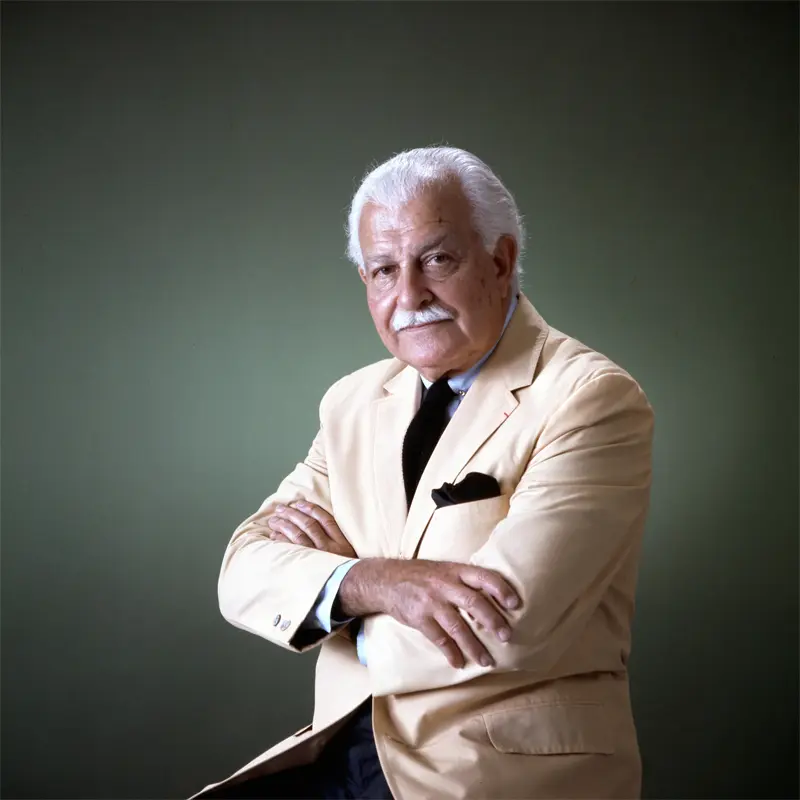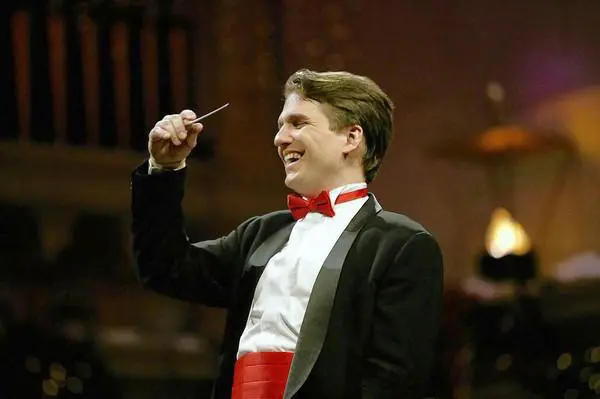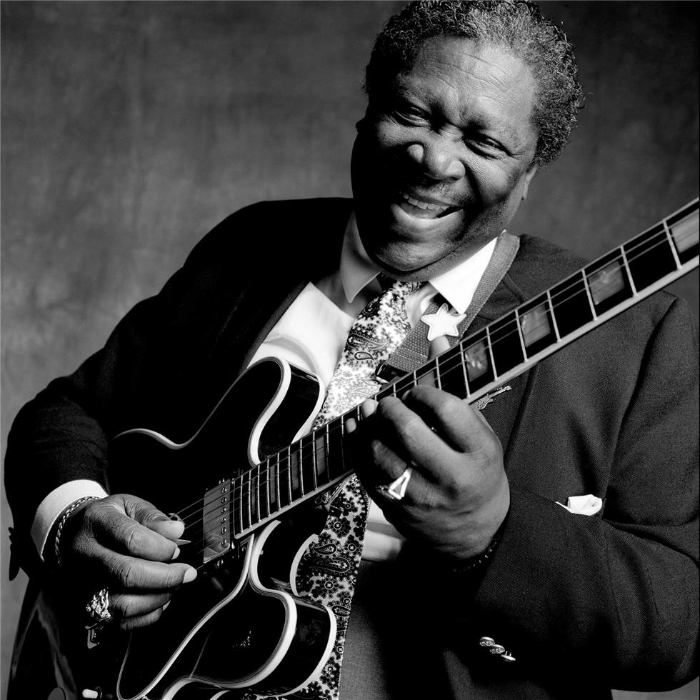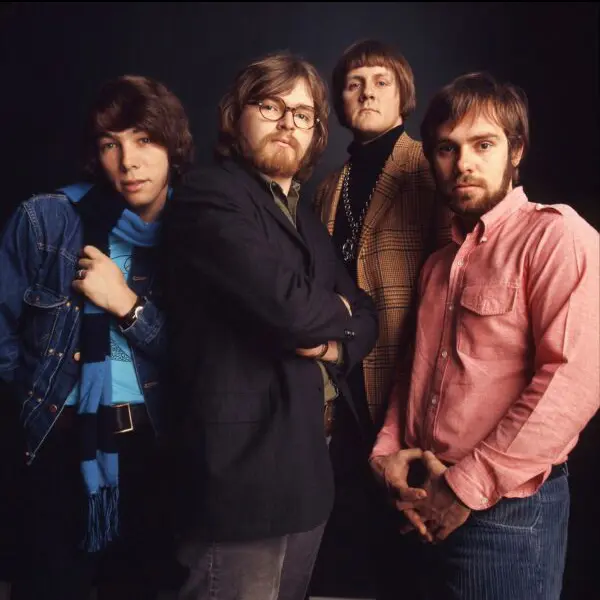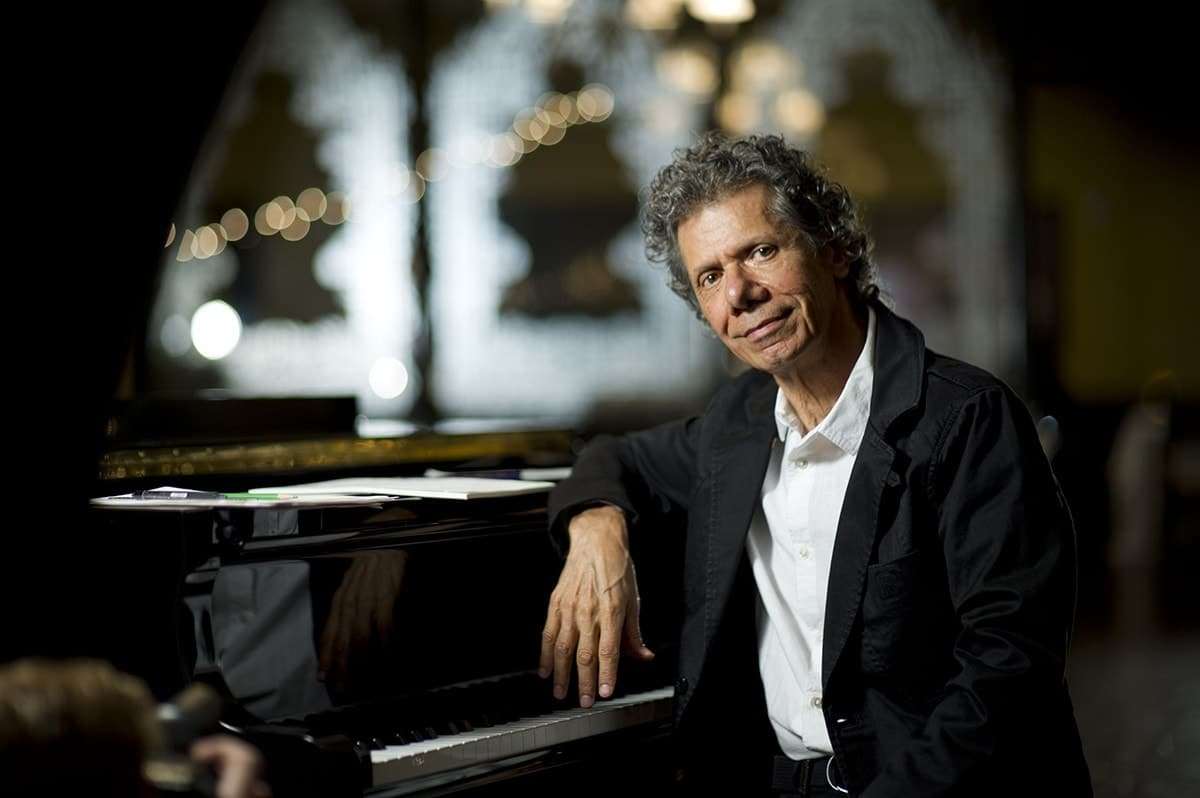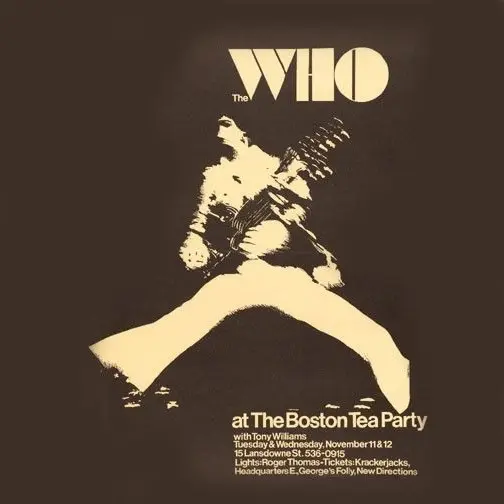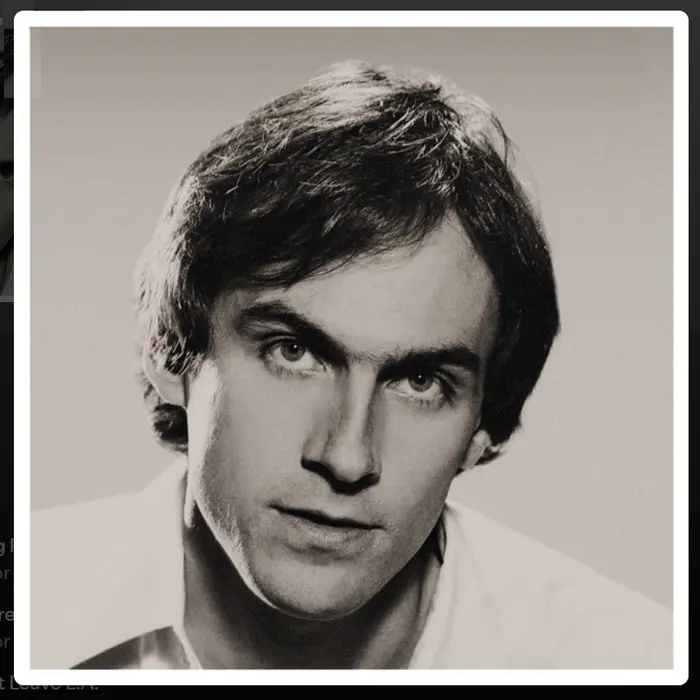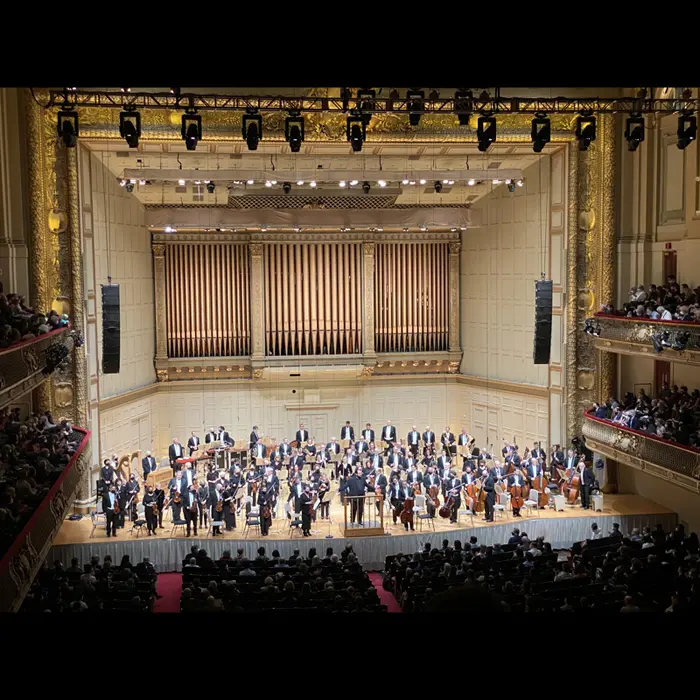Tanglewood
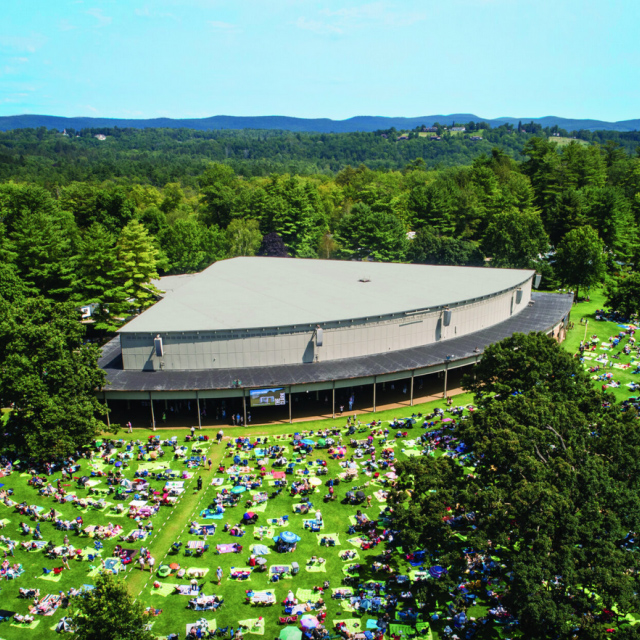
Tanglewood, a fully functioning music venue, historic landmark, music school and the summer home of the Boston Symphony Orchestra, is located in the Berkshire Hills of Massachusetts in the towns of Lenox and Stockbridge, equidistant between Boston and New York City. The internationally celebrated venue was founded in the bucolic spot in August 1934 by Henry Kimball Hadley, a Somerville, Massachusetts native and composer who was associate conductor of the New York Philharmonic at the time.
Hadley wanted to secure a place that was suitable for a seasonal classical music festival and was referred to Gertrude Robinson Smith, a passionate patron of the arts and a woman of significant financial means. In just three months, she managed to secure the funds necessary to sponsor the first outdoor performances of the Berkshire Symphonic Festival, later known as Tanglewood, which featured the New York Philharmonic and were held on the estate of Stockbridge’s Daniel Hanna, the son of industrialist Mark Hanna of Cleveland, Ohio.
Boston Symphony Orchestra, Becoming “Tanglewood”
It wasn’t until two years later, in 1936, that the Boston Symphony Orchestra (BSO) played their first concerts in the Berkshires. By that time, the festival had moved to Lenox, on the estate of Margaret Vanderbilt. In 1937, the event relocated again, this time to the estate of Mrs. Gorham Brooks and Miss Mary Aspinwall Tappan. Author Nathaniel Hawthorne of Salem, Massachusetts rented a cottage on the property in 1852 and wrote Tanglewood Tales while staying there, thus the festival was renamed Tanglewood.
During the 1937 festival, in dramatic display, a thunderous storm arose during a performance of Richard Wagner’s “Ride of The Valkyries,” destroying the tent in which performances were held and drenching concert goers. Gertrude Robinson Smith took to the stage to announce the need for a permanent building on the property and within minutes the total amount raised in donations was $30,000 (about $650,000 in 2024).
Koussevitzky Music Shed, Tanglewood Music Center
As a result, the Serge Koussevitzky Music Shed was constructed, named after the BSO’s then director and opening just in time for the 1938 season. It was designed by Eliel Saarinen and simply called The Shed until 1988, when it was dedicated to Koussevitzky. In 1939, Koussevitzky purchased a nearby estate that he renamed Saranac Manor (“Saranac” being an acronym of “Serge” and “Natalie,” his wife) and in 1940 he founded Tanglewood Music Center.
The Koussevitzky Music Shed is an open air space with a capacity of slightly more than 5,000. “Acoustic clouds” are positioned above and around the performance area and in the aft section to maximize the state-of-the art sound system. The Shed has served as a performance outlet for the past 75 years and presented some the most prominent classical soloists and conductors, including Yo-Yo Ma, Rubenstein, Heifetz, Piatigorsky, Arthur Fiedler, Keith Lockhart and John Williams, who has received over 50 Academy Award nominations for Hollywood film soundtracks.
Contemporary Trends at Tanglewood Series
The Shed has also been the home of the Contemporary Trends at Tanglewood series. Since the 1960s, it’s hosted some of modern music’s most successful acts, though it shuttered briefly In 1972 amid complaints of excessive decibel levels and unruly audiences. It resumed that following year and has most often featured artists associated with the Great American Songbook, jazz, folk, pop and soft rock.
Among the hundreds of notable vocalists and musicians who’ve appeared over the decades have been Frank Sinatra, Tony Bennett, Ray Charles, Miles Davis, Ella Fitzgerald, Count Basie, Chick Corea, Airto Moriera, Jack DeJohnette, Liza Minnelli, Natalie Cole, Whitney Houston, Willie Nelson, B.B. King, Jefferson Airplane, The Who, Janis Joplin, Orpheus, Neil Young, The Beach Boys, Steve Winwood, Warren Zevon, Joni Mitchell, Paul Butterfield, Tim Hardin and Bob Dylan. James Taylor traditionally appears on the 4th of July, followed by a fireworks display.
Seiji Ozawa Hall, Educational programs, Annual attendance
Tanglewood’s main concert hall is dedicated to Seiji Ozawa, the BSO’s 13th and longest-tenured director. Opened in 1994, Seiji Ozawa Hall was designed by William Rawn Associates of Boston and incorporates elements of Japanese and traditional New England architecture, has a capacity of 1,100 and features massive doors at the rear that open to a lawn for spectators. Its sound system has a slight, built-in delay that synchronizes the natural acoustical resonance of the building with the system, providing enhanced listening experiences for those within the hall and those on the lawn.
Tanglewood is also the home of several educational organizations including the Tanglewood Music Center, Boston University Tanglewood Institute, Days in the Arts (for middle school students), Kid’s Corner (a weekend program with arts and crafts activities) and Watch and Play (for children between ages three and 10). During the regular season, over 350,000 people visit Tanglewood.
(by John Cappello)

